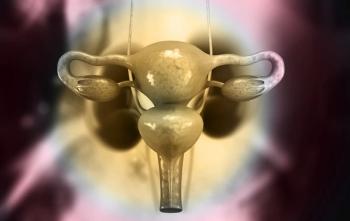
Durvalumab/Carboplatin/Etoposide Prove Tolerable in ES-SCLC
Patients with ES-SCLC who had an ECOG performance status of 2 or 3 achieved ORRs of 52.4% and 45.5%, respectively, with the study treatment.
Treatment of durvalumab (Imfinzi), carboplatin, and etoposide was tolerable with promising efficacy in the first-line treatment of patients with untreated extensive-stage small cell lung cancer (ES-SCLC) who have poor performance status, according to findings from a single-arm phase 2 trial (jRCTs031200319) published in The Lancet Respiratory Medicine.
The primary end point of the study was met, with the completion of 4 cycles of induction therapy in 67% (80% CI, 55.2%-76.7%; P <.0001) of patients who had ECOG performance status of 2 compared with 50% (80% CI, 26.7%-73.3%; P = .0088) in those who had an ECOG performance status of 3.
The objective response rate (ORR) in the full analysis set determined by central review was 50.9% (95% CI, 36.8%-64.9%), with rates of 52.4% (95% CI, 36.4%-68.0%) in those with an ECOG performance of 2 and 45.5% (95% CI, 16.8%-76.6%) in those with an ECOG performance status of 3. The disease control rates were 75.5% (95% CI, 61.7%-86.2%), 78.6% (95% CI, 63.2%-89.7%), and 63.6% (95% CI, 30.8%-89.1%), respectively.
The median progression-free survival (PFS) was 4.7 months (95% CI, 3.9-5.9) overall, 4.8 months (95% CI, 3.8-6.2) in those with an ECOG performance status of 2, and 4.6 months (95% CI, 1.5-8.6) in those with an ECOG performance status of 3.
Following a median follow-up period of 23.5 months (IQR, 13.1-25.4), the median overall survival (OS) was 9.0 months (95% CI, 5.1-14.1) overall, 11.3 months (95% CI, 6.7-16.1) in those with an ECOG performance status of 2, and 5.1 months (95% CI, 2.2-8.6) in those with an ECOG performance status of 3. The 1-year survival rates were 43.4% (95% CI, 34.1%-53.1%), 50.0% (95% CI, 39.1%-60.9%), and 18.2% (95% CI, 5.0%-41.5%), respectively.
Performance status improved overall in 55% (95% CI, 40.5%-68.4%), with improvements being observed in 57% (95% CI, 41.0%-72.3%) of the patients with an ECOG performance status of 2 and 46% (95% CI, 16.8%-76.6%) of patients with an ECOG performance status of 3.
A post-hoc exploratory analysis revealed that patients who completed induction therapy achieved a median OS of 15.0 months compared with 3.8 months in patients who did not complete induction therapy (P <.0001). Patients with a Charlson Comorbidity Index score of 1 or more also had a significantly shorter OS than patients with a score of 1 (P = .012). The analysis also found sex, liver metastasis, Charlson Comorbidity Index score, and neutrophil-to-lymphocyte ratio to be predictors of OS.
“This study showed the tolerability of immune checkpoint inhibitors combined with chemotherapy in patients with extensive-stage SCLC with poor performance status, showing a favourable 1-year survival rate and supporting the integration of immune checkpoint inhibitors in this therapeutically challenging population,” wrote lead author Tetsuhiko Asao, of the Department of Respiratory Medicine, Juntendo University Graduate School of Medicine in Tokyo, Japan.
A total of 57 patients with treatment-naïve, histologically or cytologically confirmed ES-SCLC not indicated for curative surgery or chemoradiotherapy were enrolled into the trial. Additionally, patients had an ECOG performance status of 2 or 3, an age of 70 years or more, measurable disease per RECIST v1.1, and adequate organ function.
Notably, 49 patients were included in the per-protocol set, with 39 patients in the ECOG performance status of 2 group and 10 patients in the ECOG performance status of 3 group.
Treatment consisted of carboplatin on day 1, etoposide on days 1 to 3, and durvalumab at 1500 mg on day 1 intravenously every 3 to 4 weeks during the induction phase. Following that, patients received 1500 mg of durvalumab every 4 weeks until progression or unacceptable toxicity.
The primary end point of the trial was tolerability, defined as the proportion of patients who completed 4 cycles of durvalumab, carboplatin, and etoposide during the induction phase. Secondary end points included the 1-year survival rate, progression-free survival per an independent review committee, overall survival, objective response rate, rate of performance status improvement, and safety.
Regarding safety, any-grade treatment-related adverse events (TRAEs) occurred in all patients, and grade 3 or higher AEs occurred in 93%, of whom 93% were in the ECOG performance status of 2 group and 92% in the ECOG performance status of 3 group. The most common grade 3 or higher AEs were decreased neutrophil count (64%), decreased white blood cell count (43%), decreased lymphocyte count (30%), hyponatremia (18%), and febrile neutropenia (16%).
Reference
Asao T, Saida Y, Watanabe S, et al. Durvalumab, carboplatin, and etoposide in patients who are treatment-naive with extensive-stage small-cell lung cancer and poor performance status (NEJ045A): a single-arm phase 2 trial. Lancet Respir Med. Published online September 28, 2025. doi:10.1016/S2213-2600(25)00240-1
Newsletter
Stay up to date on recent advances in the multidisciplinary approach to cancer.



















































































